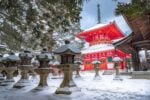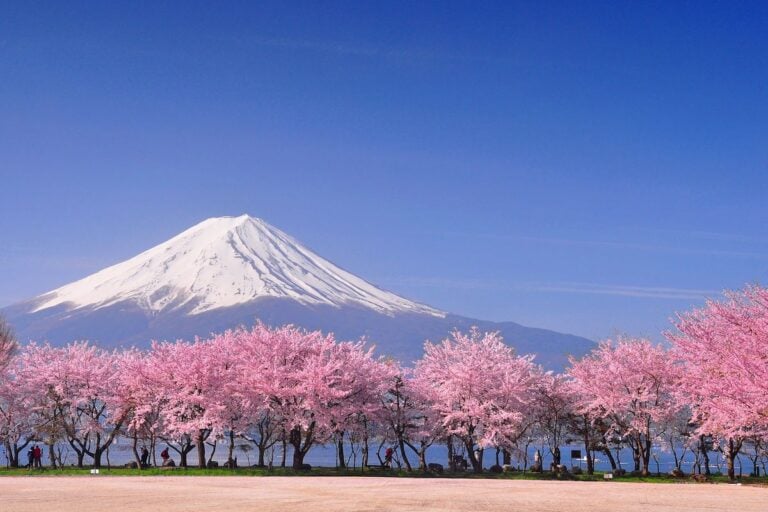
Spring is the time of the year when flowers shine the most. As the trees dormant during the winter wake up, new leaves sprout and the warm days begin to return. Spring is one of the most famous seasons in Japan. Almost everyone who knows anything about Japan knows about their famous Sakura (or cherry blossoms). While Sakura are incredibly beautiful, they are however only one of the many stunning flowers that bloom during spring in Japan.
In this article, I would like to introduce you to my top ten favorite flowers that bloom in Japan and foods that are best enjoyed during the Spring.
1. Plum 梅

Plum Season: Late February – Early March
Perhaps the second most famous flower in Japan, plums (or ume) are the first major bloom of spring starting at the end of February. To celebrate these flowers, you can visit the variety of ume festivals across Japan.
2. Nanohana 菜の花
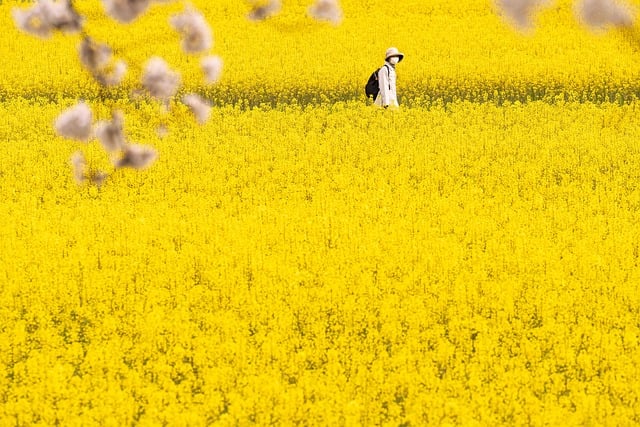
Nanohana Season: Mid March – Early April
Also known as rapeseed blossoms, Nanohana are a popular flowering plant across Japan. The rapeseed plant is often used to serve in dashi (stock) as well as katsuobushi (bonito flakes). You can also find its shoots pickled or served as a salad. Throughout the spring bloom, Nanohana Matsuri is held annually across Japan as many take train rides to see the bright yellow fields.
3. Wisteria 藤

Wisteria season: Late April – Early May
The wisteria, or known as fuji in Japanese, are popular flowers for gardening. Similar to Sakura flowers, wisterias have their own special hanami (flower viewing) after historically being the symbol of the ruling Fujiwara clan in the Heian era (794-1192 AD). Wisterias show up quite a bit throughout Japanese culture being popular among Buddhism and making a presence at many temples and shrines.
4. Muscari ムスカリ
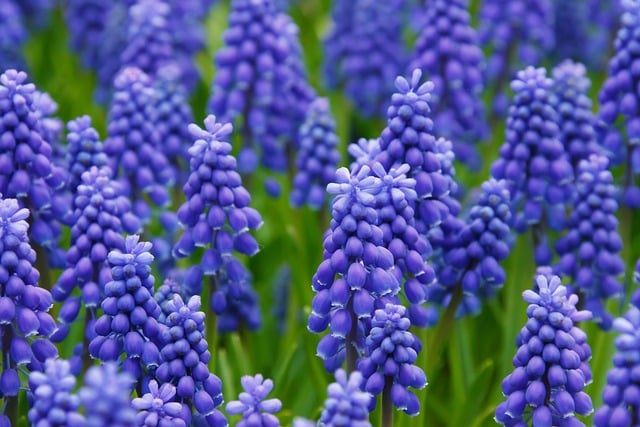
Muscari season: March – April
Muscari are a common garden flower across Japan. While less impressive then the Sakura or wisteria trees, these flowers are small fall planted bulbs that bloom into many little grape-like flowers from the tip of its sturdy stem. Often planted in group plantings alongside tulips and daffodils, Muscari can often be seen in local gardens.
5. Lupinus ルピナス
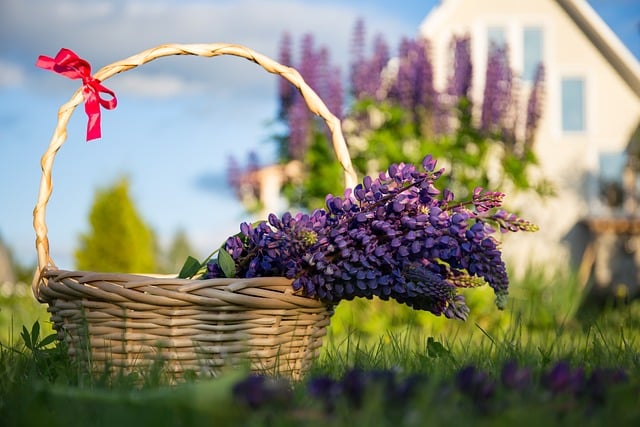
Lupinus season: April – June
The lupinus is a precious flower that blooms in early spring when it’s still cold out. It sometimes is also referred to as nobori fuji (昇藤) due to the fact the resemble wisteria, they can be popular in regions like Hokkaido. The taller species look great in the center of a flower beds or in a cluster in the back of a garden. The small species is so hardy that it can be easily propagated in less hospitable environments.
6. Creeping Phlox 芝桜
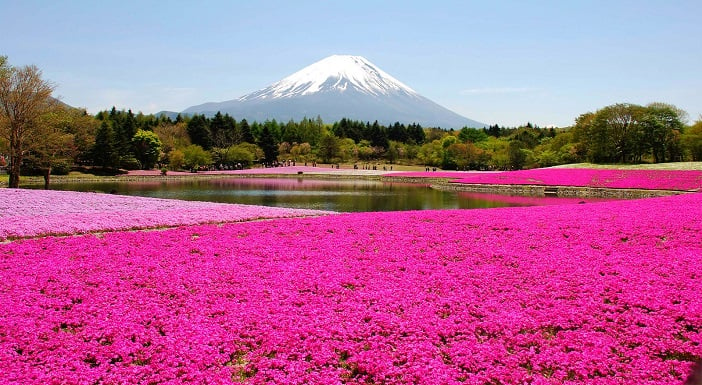
Creeping Phlox season: April – May
For anyone who loves the color of pink, Creeping Phlox provides wide vistas that can be enjoyed beneath the view of Mt. Fuji. It’s Japanese name, “shiba-zakura” (meaning “lawn sakura”), is because of its flower shape and the fact it spreads over fields like grass. Since it is evergreen and resistant to cold, heat, and drought, it is sometimes planted as a substitute for lawns.
7. Rhododendron シャクナゲ

Rhododendron season: April – June
These flowers are light and fluffy flowers that cluster together forming a ball at the end of the branch leaving a very gorgeous appearance. The flowers come in a wide variety of colors and the natural shape of the tree means that pruning is not necessary making it a popular flower both in Japan and Europe. Since there are more and more varieties that are resistant to heat and easy to grow, even potted plants can be fully enjoyed.
8. Lady Banks’ Rose モッコウバラ
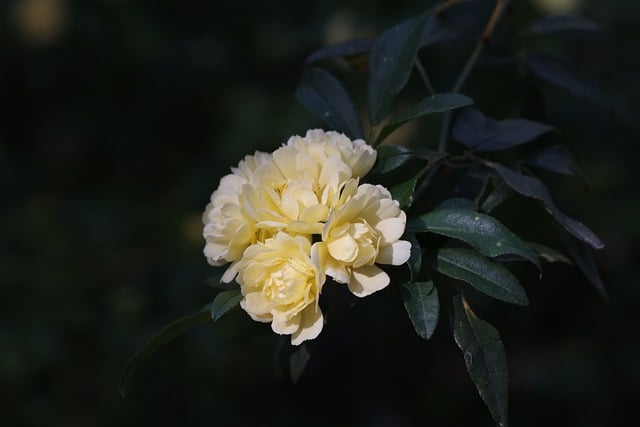
Lady Banks’ Rose season: April – May
Lady Banks’ Rose are flowers that are resistant to cold and leads to a cascade of blooms at the beginning of spring. It has no thorns and its vines are soft and easy to handle and is resistant to pests and diseases which makes it a popular rose for both personal and professional gardening. In fact while the primary blooming seasons may be in April, flower buds form as early as December allowing this flower to even be enjoyed during wintertime.
9. Japanese Iris ハナショウブ

Iris season: May – July
The iris plant (or Hanashobu in Japanese) was first introduced to Japan during the Edo period (1603-1868) as it became popular throughout what is modern day Tokyo. The first Iris Gardens opened in Hoikiri, Katsushika in the mid-Edo period and became a famous source for paintings of the time. Throughout spring you are able to enjoy the variety of Iris Festivals, or Katsushika Shobu Matsuri, to enjoy these lovely flowers.
10. Nemophila ネモフィラ
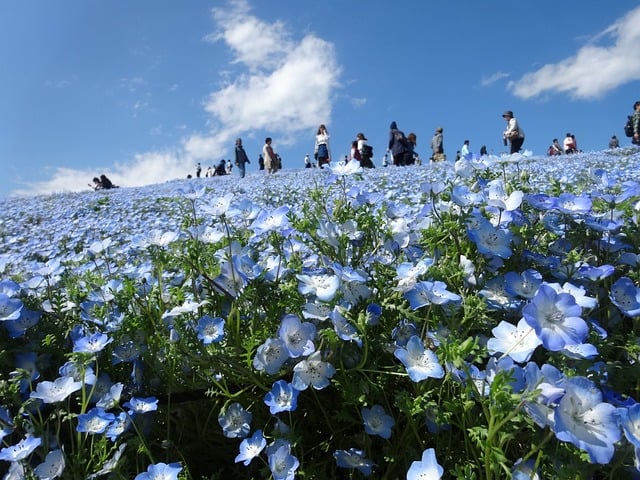
Nemophila season: Mid-April – early May
Similar to the Creeping Phlox, Nemophila is another low-growing plant that blooms throughout April and May. However, this flower blooms a deep baby blue instead of pink. The name nemophila (or the lone word nemofira in Japanese) comes from the English name “baby’s blue eyes”.
Springtime Foods
Alongside the variety of matsuris and gardens to visit in Japan, you can also enjoy the seasonal snacks that accompany the floral season. To start, of course Sakura is the most famous example of this. Sakura flavored teas, candies, cakes, and so on can be seen at every café and convenience store. For anyone visiting in Japan during Springtime can attest, it is popular for a reason. These snacks are quite delightful with their delicate floral flavor.
1. Sakura Mochi 桜餅
One popular example often eaten during springtime (particularly around hinamatsuri or Girl’s Day on March 3) is sakuramochi (桜餅). This is a traditional wagashi consisting of a sweet pink colored rice cake (mochi) with a red bean paste (anko) center wrapped in a pickled cherry blossom (Sakura) leaf. There are two popular styles: Kanto-style which uses shiratama-ko (白玉粉 or rice flour) and Kansai-style that uses domyoji-ko (道明寺粉 or glutinous rice flour).
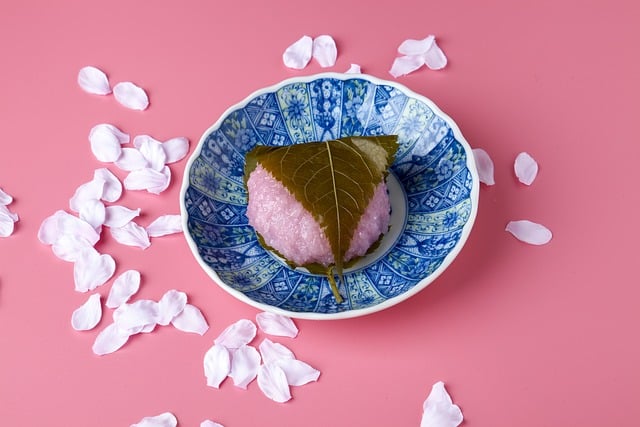
Kansai Style
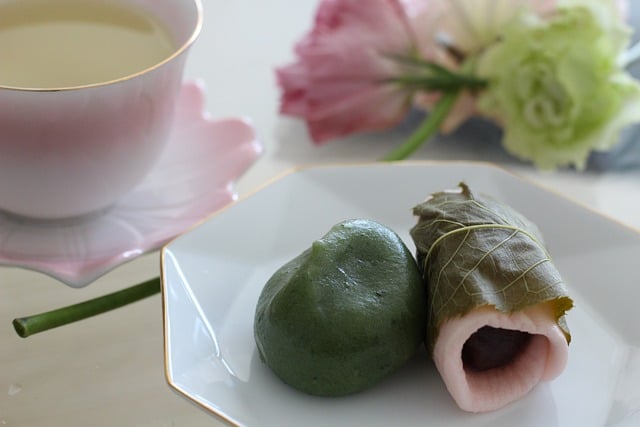
Kanto Style
2. Ichigo Daifuku イチゴ大福
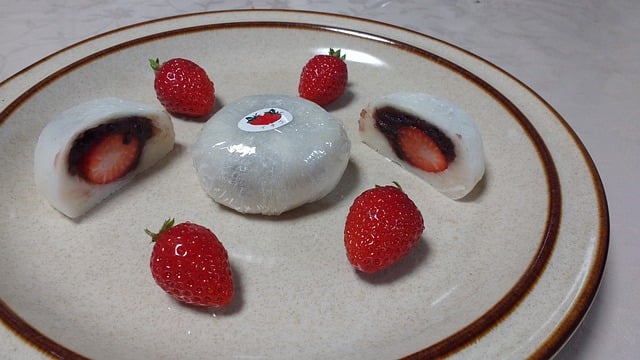
Another popular springtime wagashi, Ichigo Daifuku is a popular sweet as strawberry picking season is during March. These are often sweets with a mochi outer coating, red-bean paste filling, and an entire strawberry in the center. Often popular to eat in winter and spring, you can also go strawberry picking while in Japanese springtime to go along with your ichigo daifuku. These can also be in a variety of flavors such as matcha (green tea) or custard.
3. Bamboo Shoots 竹の子
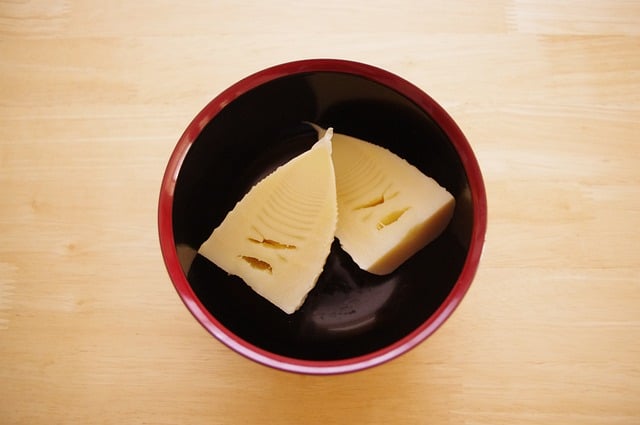
Throughout March and early May, bamboo shoots (or takenoko) are popular in traditional Japanese restaurants. In early spring bamboo begin sprouting leading to delicious shoots that you can pick, peel, and then eat! There are a variety of dishes you can try from takikomi gohan (Japanese mixed rice with seasonal ingredients) and tempura takenoko. Additionally, it is a wonderful excuse to visit some of the stunning bamboo forests and attend a takenoko matsuri.
4. Nanohana 菜の花
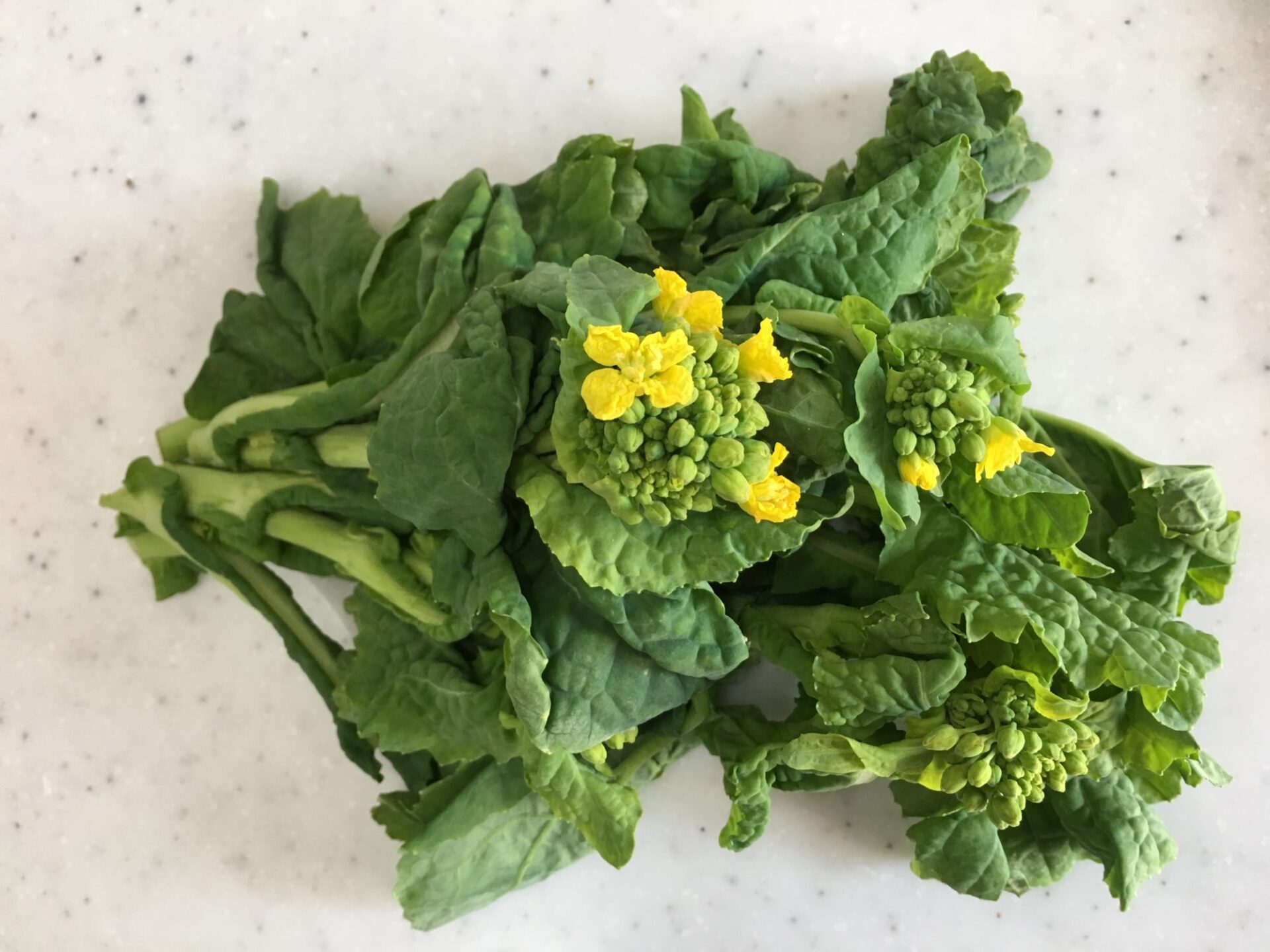
As mentioned before, Nanohana is a beautiful flower to view, but also an iconic flower to eat! The best season for these flowers is February to March when they are still in buds before the bright yellow flowers open up. They are very easy to prepare as they are good simply boiled with a little of salt, a little soy sauce, and katsuobushi (bonito flakes) on top. Then after you enjoy eating them, you can go see the bright yellow fields and enjoy the sunshine.
5. Hatsugatsuo 初鰹
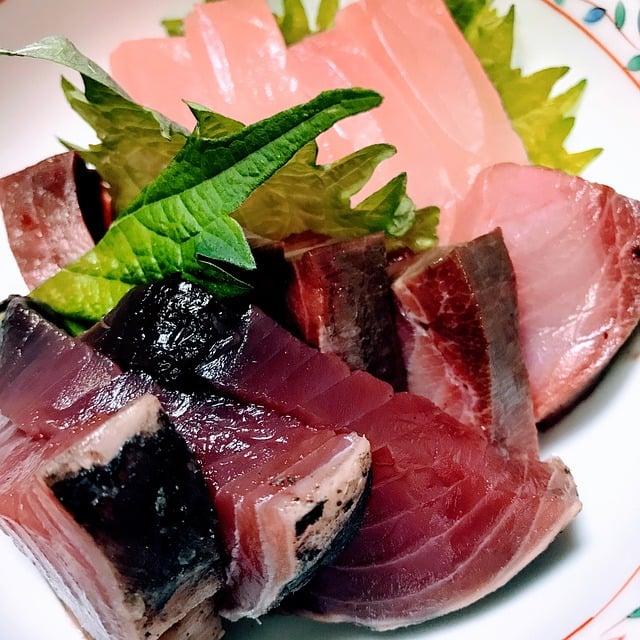
To add a little protein to your springtime meal, you can also consider enjoying some sashimi by adding hatsugatsuo to your meal. Hatsugatsuo is the first bonito fish of the year that is caught in April or May. It is said that they tend to have less fat compared to modorigatsuo (戻り鰹) which are caught later in the year. This leads to a fresher and cleaner taste that can only be enjoyed during the spring months. You can eat these pan seared (known as katsuo no tataki 鰹のタタキ) by grilling the surface of the katsuo to help remove the fishy smell. However, it can also be eaten raw with some seasonings like garlic paste and ponzu, depending on your preference.




